What does Project-Based Learning mean in Kindergarten Education?
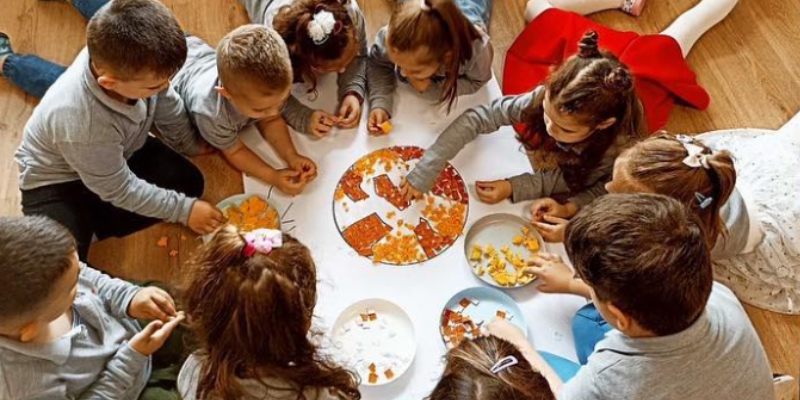
If you've ever stepped into a classroom beyond kindergarten or preschool, chances are you've come across the pedagogical buzzword: Project-based learning. It has gained worldwide recognition in K-12 classrooms, aiming to empower students to gain a deeper understanding of subjects by applying their knowledge to real-world problem-solving situations.
But what does project-based learning mean for early childhood education (ECE) and kindergarten educators? And how does it support young learners' skill development as they begin their first exploration of the world? What challenges can teachers face when implementing project-based learning? What can we learn from a real case example at a HEI Schools kindergarten?
This blog seeks to clarify the concept of project-based learning in kindergarten, explore its impact on children's development, address the challenges of implementing PBL, and provide a case study showcasing a real project-learning activity from one of HEI Schools kindergartens.
Project-based Learning in Early Childhood Education
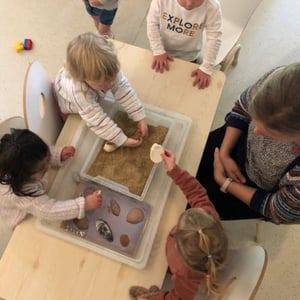 Project-based learning (PBL) is an educational approach that centers around hands-on projects. In the Early Childhood Education setting, PBL principles remain consistent. It involves children in designing, developing, and constructing practical solutions to problems. For instance, kids can use their numeracy skills to count grocery ingredients for meal preparation.
Project-based learning (PBL) is an educational approach that centers around hands-on projects. In the Early Childhood Education setting, PBL principles remain consistent. It involves children in designing, developing, and constructing practical solutions to problems. For instance, kids can use their numeracy skills to count grocery ingredients for meal preparation.
The educational value of PBL lies in its goal to foster holistic development and learning in children. Simply put, PBL supports social, emotional, physical, mental, and intellectual growth. By engaging children in enjoyable projects and activities, PBL cultivates a love for learning, nurtures creative and critical thinking, and provides research-proven benefits for learners at all educational levels.
Which skills can children develop with Project-Based Learning (PBL)?
Project-Based Learning (PBL) offers numerous benefits and opportunities for children to develop essential skills. By engaging in hands-on, real-world projects, children can enhance their critical thinking, problem-solving, and collaboration abilities.
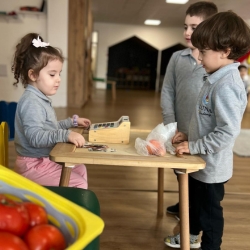 1. Deepening numeracy, literacy, and STEM skills:
1. Deepening numeracy, literacy, and STEM skills:
Project-based learning provides children with the chance to apply their newly developed literacy, numeracy, and STEM skills in practical, real-life situations. This helps them deepen their understanding of these subjects and make meaningful connections between what they learn in the classroom and how it can be applied in the world around them. For example, a gardening project that involves counting seeds or reading instructions for planting can reinforce math and literacy skills in a fun and engaging way.
2. Strengthening teamwork and social skills: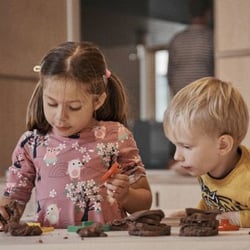
According to research, project-based learning promotes teamwork and social skills, preparing children for success in any future collaboration. Through collaborative projects, children learn to work as a team, respect each other's ideas, and communicate effectively. They develop essential social skills such as listening, empathy, and cooperation, which are important for positive social interactions. For instance, simply a LEGO city-building project can already offer children a chance to collaborate, communicate, and reach consensus on what and where to construct. This engaging activity not only fosters their problem-solving skills and creativity but also enhances teamwork and social skills.
3. Enhancing creativity and problem-solving skills:
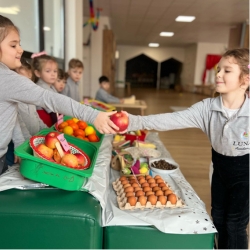 Project-based learning provides opportunities for children to think creatively, come up with innovative solutions, and express their ideas in unique ways. As they work on projects, they develop problem-solving skills, learn to overcome challenges and become independent and resourceful learners. A study demonstrated that project-based learning enhances creativity and problem-solving abilities in young learners.
Project-based learning provides opportunities for children to think creatively, come up with innovative solutions, and express their ideas in unique ways. As they work on projects, they develop problem-solving skills, learn to overcome challenges and become independent and resourceful learners. A study demonstrated that project-based learning enhances creativity and problem-solving abilities in young learners.
For instance, a project focused on developing a business idea can provide children with a deeper understanding of the concept of business in the real world. It can also nurture their creative thinking skills by encouraging them to devise innovative solutions for real-world problems through their invented business ideas. This holistic approach not only enhances their entrepreneurial mindset but also empowers them to make a positive impact on society.
4. Building the world understanding and 21st-century skills:
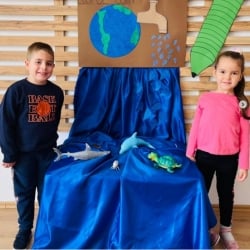 Through projects, children actively participate in problem-solving, thinking critically, and making decisions. They learn to work together, communicate, and adapt to different roles, which are important skills for the 21st century. Researchers and experts found that project-based learning nurtures children's curiosity and encourages them to explore and understand the world from different perspectives, promoting deeper understanding and higher-order thinking skills.
Through projects, children actively participate in problem-solving, thinking critically, and making decisions. They learn to work together, communicate, and adapt to different roles, which are important skills for the 21st century. Researchers and experts found that project-based learning nurtures children's curiosity and encourages them to explore and understand the world from different perspectives, promoting deeper understanding and higher-order thinking skills.
For example, engaging children in a project that focuses on recycling classroom-used papers can greatly contribute to their comprehension of sustainability topics. This knowledge will prove invaluable as they mature and equip themselves with the skills required to thrive in today's world.
Challenges when implementing PBL in kindergartens or preschools
While project-based learning offers many benefits, it also presents challenges that kindergarten teachers need to address:

- Need for Planning, Supervision, and Evaluation:
Implementing project-based learning requires careful planning to ensure that projects align with learning goals and are suitable for students' development. Teachers need to provide clear guidelines, support learning and offer help throughout the project. Additionally, continuous evaluation and feedback are important to monitor progress and ensure that learning goals are achieved.
- Difficulty in Assessing Learning Outcomes:
Research suggests that a combination of formative and summative assessments can effectively capture the learning outcomes of project-based learning. However, assessing learning outcomes in project-based learning can be more complex than traditional assessments. As projects often cover various skills and knowledge, teachers need to consider multiple assessment strategies, such as portfolios, observations, and self-assessments, to gain a comprehensive understanding of children's learning.
Examples and Case Studies
One example is the curriculum developed by HEI Schools. We took inspiration from Finnish early childhood education and made learning engaging and tailored to children's interests. The HEI curriculum lets kids work on projects that combine different subjects and skills. This helps children learn and grow in a holistic way and develop important skills for the future. Let's take a look at a project that aims to teach children to make ice cream at HEI Schools in Vietnam.
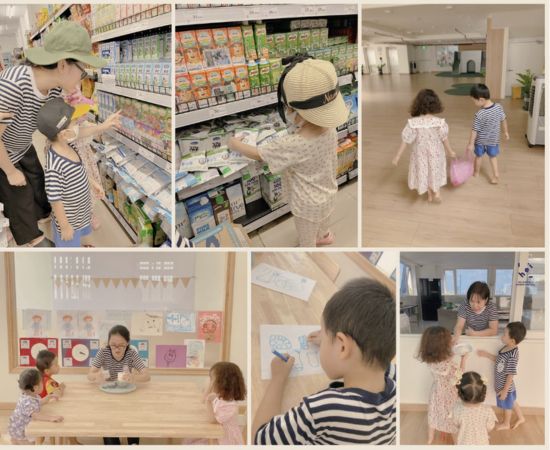
Children were tasked to make ice cream by themselves at the end of the day with teacher guidance. Here is how all skills are developed by each activity involved in the project:
-
Numeracy and literacy skills come into play when children plan a trip to the grocery store to buy ingredients for making ice cream. They use these skills to count money and calculate change, remember the recipe, and act accordingly. By exercising these abilities, children develop a practical understanding of mathematics and language while enjoying the process of creating something delicious.
-
Teamwork and social skills are put into practice when children engage in conversations to delegate tasks or reach a consensus on what to purchase. They also interact with grocery merchants and other individuals along the way. By focusing on the common objective of making ice cream, children collaborate and experience a greater sense of purpose and achievement compared to traditional methods that merely require them to work together.
-
Creativity and problem-solving skills can be greatly developed when children explore different approaches to reaching the grocery store, calculating money, and utilizing available ingredients to create their own ice cream recipe. These skills are not easily acquired through mere book learning or even watching YouTube tutorial videos.
-
Through the project, children are developing valuable 21st-century skills and a global perspective through simple activities. In this case, when they search for a recipe online, they demonstrate technological fluency. Additionally, they may explore local places to find ingredients, fostering a sense of community and familiarity with local merchants and groceries. These learning activities go beyond traditional book learning, allowing children to integrate knowledge and real-life experiences.
Conclusion
In conclusion, project-based learning is valuable in kindergarten because it helps kids grow and learn in many ways. By doing hands-on projects, children can understand things better, be more creative, solve problems, and get better at socializing. Even though there may be challenges, with good planning and supervision, project-based learning can help kids become confident learners who can succeed in the dynamic world of the 21st century, and not only achieve academic results.
Explore More with the HEI Schools Toolkit
So there you have it! A taste of the project-based learning that characterizes the HEI Schools approach. But why stop at just reading? You can experience it for yourself. We invite you to check out our HEI Schools Toolkit and book a demo with our representatives. Dive deep into our curriculum, explore our resources, and see how you can apply Project-based learning already at your school(s), one project at a time!
Sources
-
Larmer, J., Mergendoller, J., & Boss, S. (2015). "PBL for 21st Century Success: Teaching Critical Thinking, Collaboration, Communication, and Creativity."
-
Thomas, D., & Seely Brown, J. (2011). "A New Culture of Learning: Cultivating the Imagination for a World of Constant Change."
-
Krajcik, J. S., Czerniak, C. M., & Berger, C. F. (2014). "Teaching Children Science: Discovery Methods for the Elementary and Middle Grades."
-
Bell, S., Smetana, L., & Binns, I. C. (2012). "Putting Teamwork to Work: A Study of the Effectiveness of Integrated Project Teams in UK Construction."
-
Blumenfeld, P. C., Soloway, E., Marx, R. W., Krajcik, J. S., Guzdial, M., & Palincsar, A. (1991). "Motivating Project-Based Learning: Sustaining the Doing, Supporting the Learning."
-
Boss, S., & Krauss, J. (2007). "Reinventing project-based learning: Your field guide to real-world projects in the digital age. International Society for Technology in Education."




